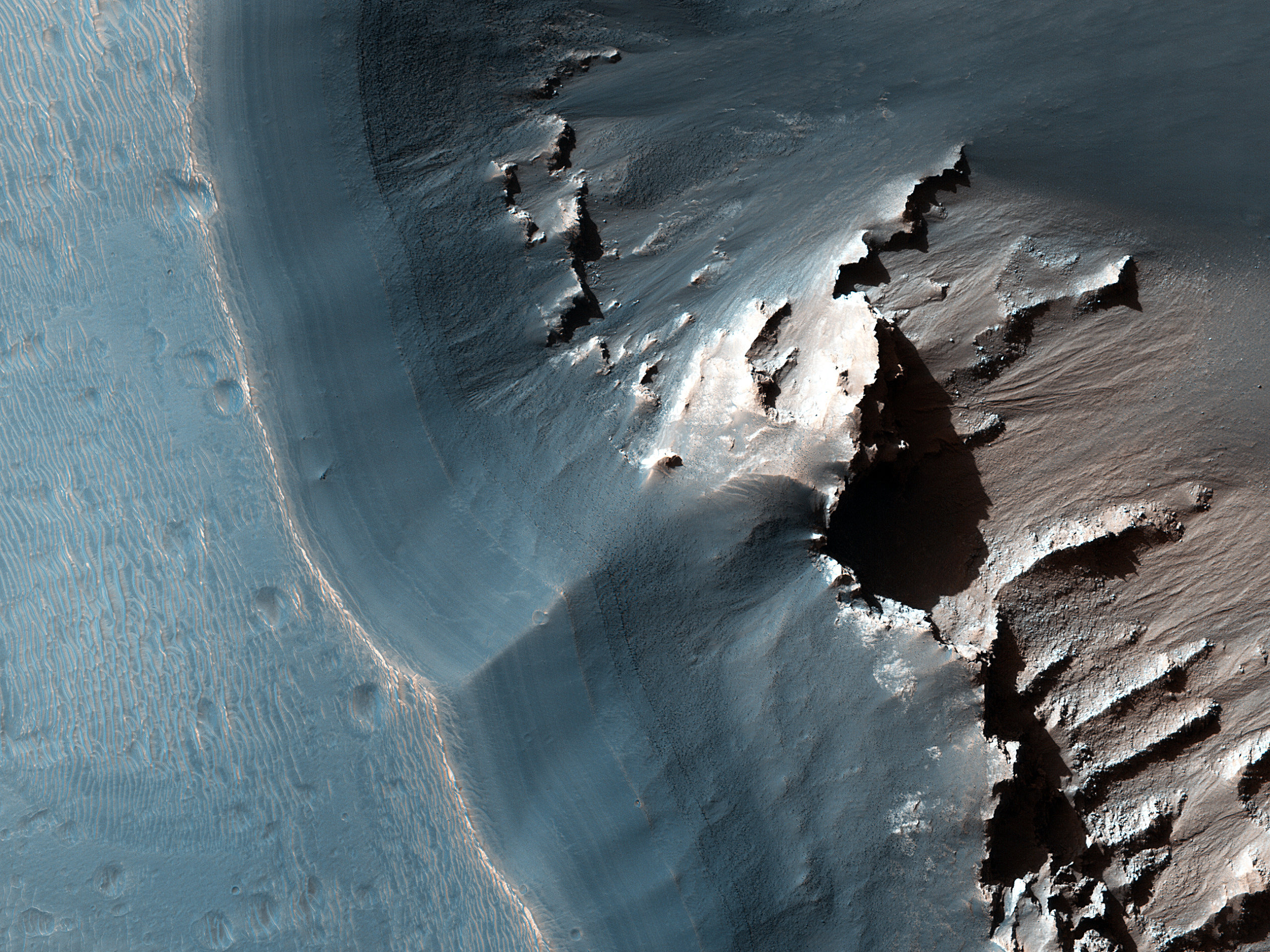This image shows the western side of an elongated pit depression in eastern Noctis Labyrinthus. Along the pit’s upper wall is a light-toned layered deposit.
CRISM spectra extracted from the light-toned deposit are consistent with the mineral jarosite, which is a potassium and iron hydrous sulfate. On Earth, jarosite can form in ore deposits or from alteration near volcanic vents, and indicates an oxidizing and acidic environment. The Opportunity rover discovered jarosite at the Meridiani Planum landing site, and jarosite has been found at several other locations on Mars, indicating that it is a common mineral on the Red Planet.
The jarosite-bearing deposit observed here could indicate acidic aqueous conditions within a volcanic system in Noctis Labyrinthus. Above the light-toned jarosite deposit is a mantle of finely layered darker-toned material. CRISM spectra do not indicate this upper darker-toned mantle is hydrated. The deposit appears to drape over the pre-existing topography, suggesting it represents an airfall deposit from either atmospheric dust or volcanic ash.
ID:
ESP_043719_1725date: 24 November 2015
altitude: 259 km
https://uahirise.org/hipod/ESP_043719_1725
NASA/JPL-Caltech/University of Arizona
#Mars #science #NASA
